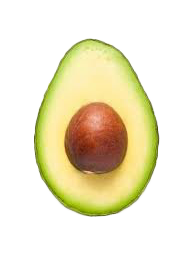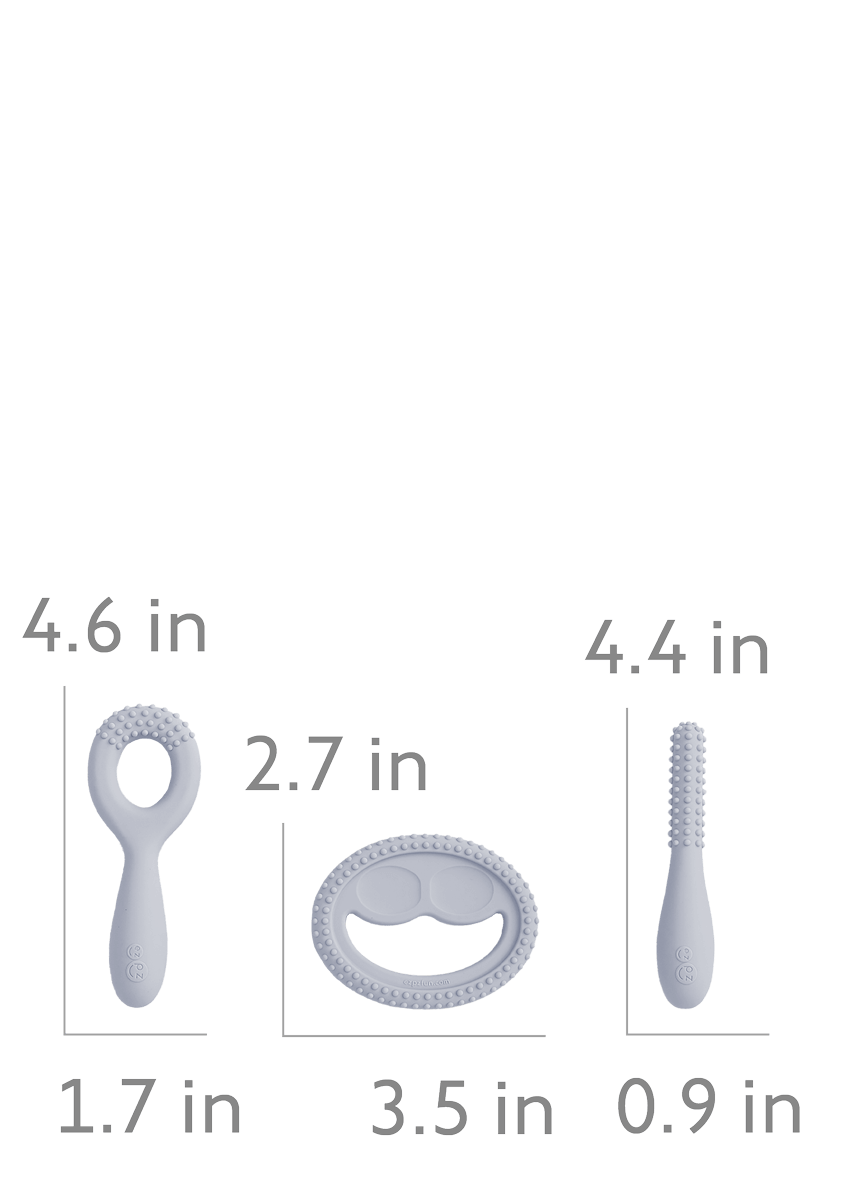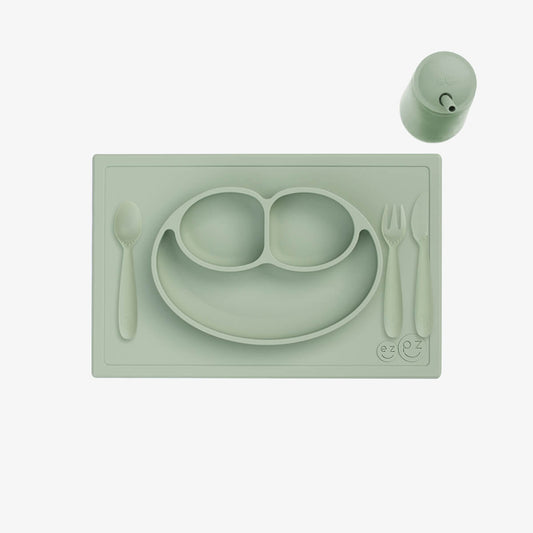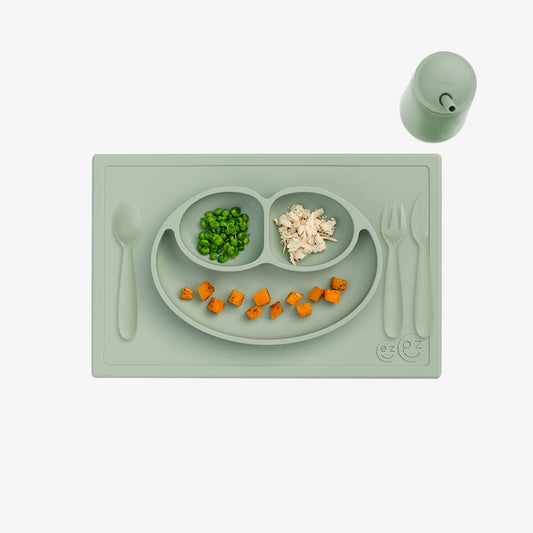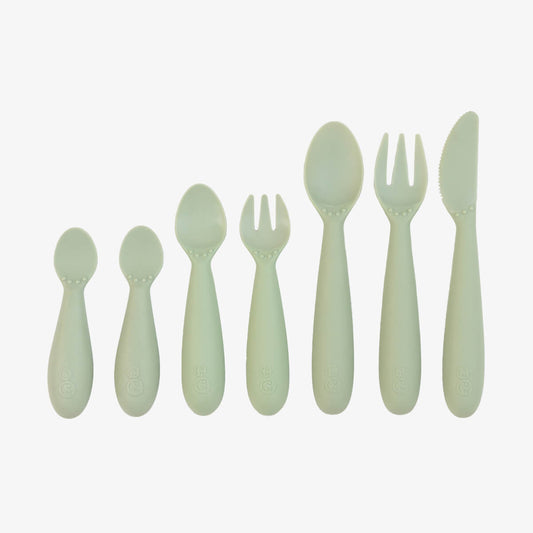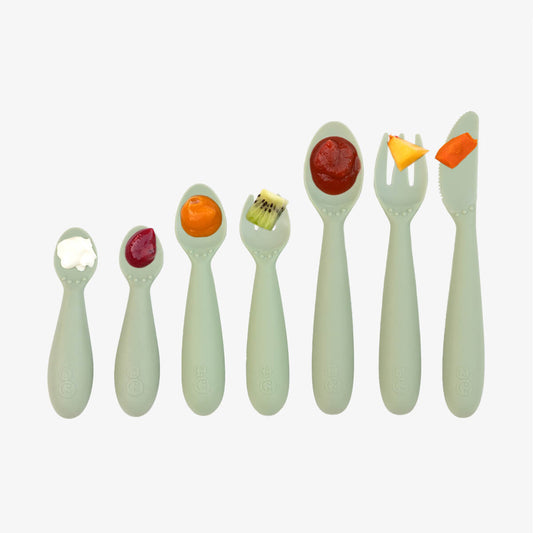
Are you curious about how your baby is going to grasp food or hold a spoon? Many of the families I work with want to know what fine motor feeding skills they should be aware of and how baby-led feeding can facilitate this development. In this blog, I’m sharing a few of my favorite tips!
Palmer Grasp: The palmer grasp is when you hand your baby a long strip of food and your baby stabilizes it against their palm with their fingers curled around it. During mealtime you can watch your baby use their palm and fingers, but their thumb isn’t quite involved yet!
- Age: The palmar grasp emerges around 6 months of age. This development is perfectly timed with the American Academy of Pediatrics (AAP) recommendation to wait to start solids until baby is 6 months.
- Feeding Speed: At this age, a baby will use this grasp to hold one piece of food at a time in the palm of their hand, and slowly (but independently) place it into their mouths.
- Feeding Tip: The ezpz Tiny Spoon is a baby-led spoon that helps babies meet feeding milestones! Preload the Tiny Spoon with food and hand it to your baby. The Tiny Spoon has a short, fat, round handle that makes it easy for your baby to practice their palmer grasp and independently feed themselves.
Raking Grasp: A raking grasp is when an infant uses all of their fingers at the same time to rake up a piece of food (or an object).
- Age: The raking grasp typically develops around 7 months of age.
- Feeding Speed: During this age range, your baby will use this grasp to quickly rake ‘fists full’ of food and independently shove it into their mouths. Watch for overstuffing during this feeding stage.
- Feeding Tip: Use a suction bowl like the Tiny Bowl to help your baby successfully grasp strips of food without the bowl sliding around. The suction feature helps your baby to develop fine motor skills and practice their hand to mouth movements, too!
Inferior Pincer Grasp: An inferior pincer grasp is when your baby uses their thumb and the side of their index finger to hold food or an object. The food is stabilized more on the thumb pad rather than the tip and side of the finger.
- Age: The inferior pincer grasp typically develops around 9 months of age.
- Feeding Speed: During this age range, your baby will use this grasp to slowly pick up one small piece of food at a time.
- Feeding Tip: Use a suction plate like the Mini Mat to help your baby pick up food with ease. The three compartments allow you to place different sized foods in each section. Diversity in food provides multiple opportunities for your baby to work on this new feeding skill!
Pincer Grasp: A pincer grasp is when your baby uses the tips of their thumb and index finger to pick up food or an object. This is a more mature feeding movement, and it allows you to serve food in cubes rather than long strips.
- Age: The pincer grasp typically develops around 10 months of age.
- Feeding Speed: During this age range, your baby will use this grasp to quickly pick up multiple small pieces of food at a time.
- Feeding Tip: Use the Mini Play Mat for mealtime and craft time to help your little one practice their pincer grasp. The sizing of the flower compartments was specifically designed to further the development of this fine motor movement.
If you find that your child is having difficulties with their feeding grasps and you need additional support, please reach out to an Occupational Therapist for an assessment of your baby’s fine motor development. #ezpzfun
Shop Best Sellers

Happy Feeding!
Dawn Winkelmann (M.S, CCC-SLP) is ezpz’s Pediatric Speech-Language Pathologist and Feeding Specialist. She has 28 years of experience teaching parents and medical professionals how to start babies on solids safely and encourage toddlers to overcome picky eating tendencies. In addition, “Ms. Dawn” is the designer of our award-winning feeding products.


